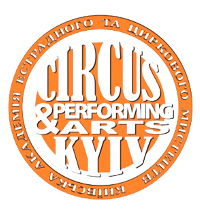The emergence of circus mechanical attractions and other «sensational death acts» in the context of circological analysis
Abstract
The article provides an artistic analysis of selected phenomena in the context of circology: the historical component of the emergence of circus mechanical attractions and other “Sensational Death Acts” is outlined. Many interesting circus mechanical attractions are analyzed and given a clear description, where the demonstration of complex circus apparatuses and devices of increased danger, which can really be considered sensational and to a certain extent “deadly”.
The issues of this article have hardly been investigated in modern art criticism of the circological field. The topic is very narrow, although it is quite interesting, but most often it was presented in a general way, only certain aspects are described fragmentarily in the historical context. There are not so many circus performers who would work in such a circus genre that could also describe and talk about the different formats and specifics of mechanical attractions in the modern circus.
Themes and features of circus mechanical attractions and other deadly acts in the history of modern circusology have a minimal level of representation among the entertainment spectacles of the end of the 19th and the entire 20th century. Currently, circus shows and performative spectacles, where circus numbers of this genre take place, are actively being implemented. The purpose of the article is to provide a systematic analysis of the features of the circus genre, which refers to mechanical attractions, circus numbers and programs, which are a rather dangerous, but interesting, unsurpassed spectacle. It is important to note that individual publications, announcements, programs of circus individual popular articles from modern magazines in the press of the late 20th and early 21st centuries certainly took place. It is also worth mentioning the role of such circus numbers in attractions as “flight on a Norwegian sleigh”, “car races in the air”, “flight from a charmata”, “double somersault on a bicycle”, as well as “lapendula or wheel of death”. An important priority in modern art criticism on circusology is extremely important research on original circus spectacles, which are interesting due to unique innovative and technical devices, but are not sufficiently covered in modern research. Also forms of circus props in complex performative spectacles, the so-called “mechanical attractions”, “dangerous trick numbers” need a deep analysis to study the characteristics of the features of today's entertainment activities.
References
2. Малихіна М. Циркове мистецтво в Україні (20-30-ті роки ХХ ст.). Київ: НАКККіМ, 2016. 154 с.
3. Станіславська К. Мистецько-видовищні форми сучасної культури: монографія. Київ: НАККіМ, 2016. 353 с.
4. Bramson B. Artistengepaeck und andere baggage. Berlin: Pro BUSINESS, 2011. 146 s.
5. Carrie H. Aerial Circus Training and Safety Manual Spiral-bound – Teacher's Edition. London. Writers Press, 2005. 344 p.
6. Cadwell St.J. Falling together: an examination of trust-building in youth and social circus training. Theatre, Dance and Performance Training, USA, 2018. № 19. Pр. 19-35.
7. Circus and Cultural Spaces ni-muenster. URL: http://surl.li/kvswyv

 ISSN
ISSN  ISSN
ISSN 



